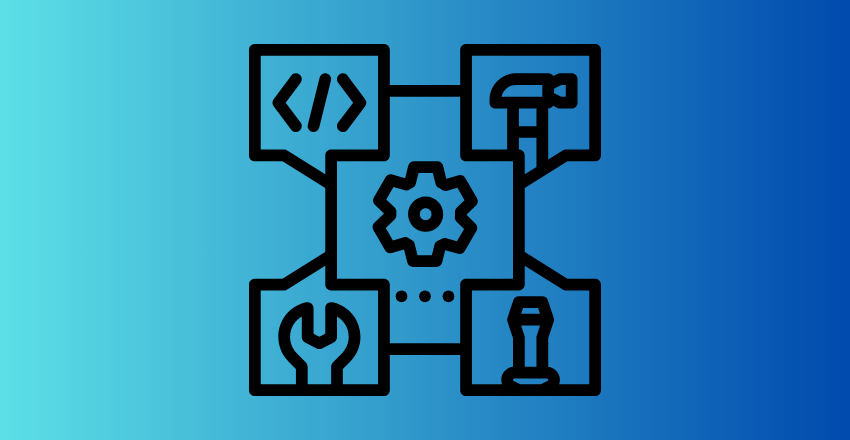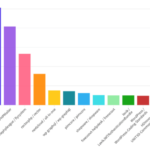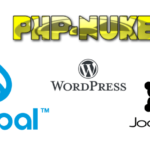 In today’s technology landscape, APIs play a crucial role in allowing different software systems to communicate with each other, enabling the creation of modular and scalable applications. This guide serves as a comprehensive reference for PHP developers who want to build their APIs from scratch.
In today’s technology landscape, APIs play a crucial role in allowing different software systems to communicate with each other, enabling the creation of modular and scalable applications. This guide serves as a comprehensive reference for PHP developers who want to build their APIs from scratch.
APIs and Their Role in Web Development
Welcome to our comprehensive guide on building APIs with PHP! Before diving into the technical aspects of API development using PHP, it’s important to understand what APIs are and their role in web development.
APIs, or Application Programming Interfaces, are sets of protocols, tools, and routines for building software applications.
APIs play a critical role in today’s technology landscape, facilitating communication between different software systems and enabling developers to build scalable and modular applications.
With APIs, developers can create software that is compatible with a wide range of platforms, programming languages, and devices. APIs can also help streamline development processes by reducing the need for manual data entry and integrating disparate systems.
In web development, APIs allow different web applications to interact and share data with one another. For example, a mobile application may rely on a web API to retrieve data from a server or perform certain operations.
Whether you’re building a mobile app, a web service, or an e-commerce platform, understanding APIs and how they work is crucial for building modern, connected applications.
PHP Basics for API Development
If you’re new to PHP, it’s important to understand some basic concepts before diving into API development with PHP. Let’s explore some of the essential PHP basics that you’ll need to know.
Variables
In PHP, variables are used to store information such as numbers, strings, and arrays. Variables in PHP begin with the $ symbol, followed by the variable name.
$message = "Hello, world!";Data Types
PHP supports various data types, including integers, floats, strings, booleans, and arrays. You can use the gettype() function to determine the data type of a variable.
$age = 28;
$price = 12.99;
$name = "John Doe";
$is_valid = true;
$items = array("apple", "banana", "orange");
echo gettype($age); // Outputs "integer"Functions
Functions are reusable blocks of code that perform a specific task. In PHP, you can create your own functions or use built-in functions. To define a function, use the function keyword, followed by the function name and parameters.
function greet($name) {
echo "Hello, " . $name . "!";
}
greet("John"); // Outputs "Hello, John!"Control Structures
Control structures are used to control the flow of a program. In PHP, you can use control structures like if, else, while, and for to make decisions and repeat code blocks.
$age = 28;
if ($age >= 18) {
echo "You are an adult.";
} else {
echo "You are under 18.";
}By understanding these PHP basics, you’ll be well-equipped to start building APIs with PHP. Let’s move on to choosing the right PHP framework for your project.
Choosing the Right PHP Framework for API Development

Choosing the right PHP framework is crucial for efficient API development. PHP frameworks provide developers with pre-built components, libraries, and tools that can significantly accelerate and simplify the development process.
There are several popular PHP frameworks available for API development, each with their own strengths and weaknesses. Let’s take a look at some of the most popular options:
| Framework | Description | Pros | Cons |
|---|---|---|---|
| Laravel | A full-stack framework that provides a rich set of features, including authentication, routing, and testing. | Easy to use, well-documented, large and active community, excellent ORM (Eloquent) | Slightly slower compared to other frameworks, higher learning curve for new developers |
| Symfony | A high-performance framework that offers a wide range of reusable components, including form creation, security, and translation. | Highly customizable, great documentation, large community, powerful command line interface | Steep learning curve, can be overwhelming for beginners |
| CodeIgniter | A lightweight and easy-to-use framework that provides a small footprint, making it ideal for rapid development. | Fast and lightweight, easy to learn, minimal configuration required | Not suitable for large-scale applications, limited built-in features |
When choosing a PHP framework for API development, it’s important to consider factors like project requirements, team experience, and personal preference. It’s also important to keep in mind that while frameworks can provide significant benefits, they can also introduce additional complexity and potentially slow down development if used incorrectly.
Ultimately, the right PHP framework for your API development project will depend on your specific needs and priorities. Consider doing some research and prototyping with different frameworks before making a final decision.
Designing and Planning Your API
Effective API design and planning are critical to the success of any PHP API development project. A well-designed API is easy to use, encourages adoption, and ultimately helps drive business growth. By taking the time to plan and design your API carefully, you can ensure that it meets the needs of both your developers and end-users.
Before you begin building your API, you should create a clear API specification that defines its purpose, functionality, and intended audience. The specification should include information on the API’s endpoints, request/response formats, and data types. This specification serves as a blueprint for your API development project, and it will help ensure that your API meets its requirements and is scalable and modular.
When designing your API, it’s important to think about endpoint naming and structure. Your endpoint naming should be easy to understand and follow a consistent pattern to make it easier for developers to use and remember. The structure of your endpoints should be logical and intuitive and make sense for the type of data you’re working with.
Security is a crucial aspect of API design, and it’s important to consider security from the outset. You should incorporate security measures like authentication and authorization into the design of your API to protect your data and ensure that only authorized users can access your API. You should also consider how to handle errors and exceptions, as well as how to provide meaningful error messages to users.
API documentation is another important consideration when designing and planning your API. You should create clear and up-to-date documentation that provides developers with the information they need to use your API effectively. This documentation should include detailed descriptions of your endpoints, data types, and response formats, as well as code examples and usage scenarios.
By taking the time to design and plan your API carefully, you can create an API that is easy to use, secure, and scalable. Whether you’re building a public API for third-party developers or an internal API for your own team, careful planning and design can help ensure its success.
Implementing API Authentication and Authorization
Securing APIs is a critical aspect of API development with PHP. There are different approaches to ensuring that only authorized clients can access your API endpoints, and that the information transmitted between the server and client is protected. In this section, we will discuss the most common authentication and authorization techniques for securing APIs developed with PHP.
API Authentication
API authentication is the process of verifying the identity of clients that want to access your API. There are several authentication methods available, such as basic authentication, OAuth, JSON Web Tokens (JWTs), and API keys.
- Basic authentication: This is a simple authentication method where clients send a username and password in the request header. The server compares these credentials with a database of allowed users and grants access if the credentials match.
- OAuth: OAuth is a widely-used authentication protocol that allows users to grant third-party applications access to their resources without revealing their credentials. OAuth is widely used by social networks, such as Facebook, Twitter, LinkedIn and Google, to enable users to share content with these networks from third-party apps.
- JSON Web Tokens (JWTs): JWTs are a popular alternative to session-based authentication. They are a type of token that contains information about the user and are signed using a secret key. The token is then sent with each request, and the server verifies it to grant access to the requested resources.
- API keys: API keys are another commonly used authentication method for APIs. Clients are assigned a unique API key that they include in requests. The server verifies the key and grants access to the requested resources if the key is valid.
API Authorization
API authorization is the process of granting access to specific API resources based on the user’s role or permissions. Authorization can be implemented using role-based access control (RBAC), attribute-based access control (ABAC), or rule-based access control (RBAC).
- Role-based access control: This method grants access based on the user’s role. For example, if a user is an administrator, they might have access to all resources, while a regular user can only access limited resources.
- Attribute-based access control: ABAC grants access based on a set of attributes associated with the user. For example, a user’s role, department, or geographic location can be used to determine whether they have access to a particular resource.
- Rule-based access control: RBAC grants access based on a set of predefined rules. For example, a rule might specify that only users with a certain role and a specific IP address range can access a particular resource.
Implementing API authentication and authorization in PHP requires careful consideration and planning. You should choose the authentication and authorization methods that best fit your application’s requirements and security needs. Proper implementation of these methods can help ensure the security and privacy of your API resources.
Handling Errors and Exceptions in API Development with PHP

Developing APIs with PHP can be a complex process, and errors and exceptions are bound to occur. Proper error handling is crucial to ensure that your API is reliable and user-friendly. This section will cover the best practices for handling errors and exceptions in PHP API development.
Understanding PHP Exceptions
Exceptions are errors that occur during the execution of code. In PHP, exceptions allow for more fine-grained control over error handling, making it easier to identify and address issues. When an exception is thrown, the PHP runtime will halt execution and look for a “catch” block to handle the error.
Note: It’s important to only catch exceptions that you are prepared to handle, as catching all exceptions can lead to unexpected behavior and make it harder to debug issues.
Providing Meaningful Error Messages
When an error occurs, it’s important to provide a clear and concise error message to the user. This message should include information about the error, as well as any steps the user can take to resolve the issue. In API development, error messages should also include details about the request that caused the error, such as the request method and URL.
Example: If a user attempts to access a resource they don’t have permission to view, the API could return an error message like this:
{"error": "You are not authorized to view this resource.
Please ensure that you have the proper permissions and try again."}Handling Edge Cases
Edge cases are situations that may not occur frequently, but can still cause issues if not handled properly. In API development, edge cases can include things like sending invalid data types, exceeding rate limits, and encountering network errors. It’s important to identify potential edge cases and handle them gracefully to prevent unexpected errors.
Example: If a user attempts to send an invalid data type in a request, the API could return an error message like this:
{"error": "Invalid data type for parameter 'name'.
Please ensure that you are sending a valid string value."}Gracefully Responding to Unexpected Errors
Even with proper planning and testing, unexpected errors can still occur. In these cases, it’s important to have a fallback mechanism in place to prevent the user from experiencing a complete outage. This can include things like returning a cached response or redirecting the user to a different endpoint.
Example: If the API encounters an unexpected error and cannot process a request, it could return an error message like this:
{"error": "An unexpected error occurred while processing your request.
Please try again later."}Proper error handling is a critical aspect of PHP API development. By following the best practices outlined in this section, you can ensure that your API is reliable, user-friendly, and able to handle unexpected errors gracefully.
Testing and Debugging PHP APIs

Testing and debugging are critical aspects of developing PHP APIs. They ensure that your code is functioning as intended and that any issues are caught and resolved quickly. In this section, we will discuss some strategies for testing and debugging PHP APIs.
Unit Testing
One of the most effective ways to test PHP APIs is through unit testing. Unit testing involves creating small, focused tests that validate the behavior of individual components of your code. These tests can be automated and run repeatedly, providing confidence that your code is functioning as expected.
When writing unit tests for your PHP API, it’s important to focus on testing the input and output of each function or method. This helps ensure that your code is handling all possible scenarios and returning the expected results. You should also aim to test edge cases and error conditions to ensure that your code is resilient.
Integration Testing
In addition to unit testing, you should also perform integration testing for your PHP API. Integration testing involves testing the interactions between different components of your code and any external systems or APIs that it relies on.
When performing integration testing, it’s important to test your code in a variety of environments to ensure that it can handle different scenarios and configurations. You should also simulate different load conditions to test the performance of your API under heavy usage.
Debugging
When issues arise in your PHP API, it’s important to be able to quickly and effectively debug them. This involves identifying the source of the issue and fixing it as efficiently as possible.
There are several tools available for debugging PHP code, including Xdebug and the built-in PHP debugger. These tools allow you to step through your code and inspect variables and function calls, helping you identify the source of any issues.
API Testing Strategies
In addition to unit and integration testing, there are several API-specific testing strategies that you should consider when developing your PHP API. These include:
- Functional testing: This involves testing the behavior of your API endpoints and ensuring that they return the expected results for a given input.
- Security testing: This involves testing the security measures in your API, such as authentication and authorization, to ensure that they are effective and resilient to attack.
- Performance testing: This involves testing the performance of your API under different load conditions to ensure that it can handle heavy usage.
- Usability testing: This involves testing the usability of your API, such as the ease of documentation and the simplicity of its interface.
By employing these testing strategies, you can ensure that your PHP API is reliable, secure, and performant.
Optimizing Performance in PHP API Development
Optimizing the performance of your PHP API is crucial for delivering a seamless user experience and ensuring fast response times. Here are some PHP API performance tips to help you achieve optimal performance:
Caching
Caching is the process of storing frequently accessed data in memory or on disk for faster retrieval. In PHP API development, caching can significantly improve performance by reducing the number of database queries and API calls. Use a caching system like memcached or Redis to store and retrieve data quickly. You can also use caching headers to instruct clients to cache responses for a specified period of time.
Database Optimization
Optimizing your database can also improve the performance of your PHP API. Use indexes to speed up queries, limit the number of returned rows, and optimize your database schema for performance.
Code Optimization
Optimizing your code can help reduce response times and improve the scalability of your PHP API. Use efficient algorithms and data structures, minimize the use of loops and conditionals, and avoid unnecessary function calls and object instantiations.
Load Testing
Load testing is the process of simulating high user traffic on your API to identify bottlenecks and performance issues. Use a load testing tool like Apache JMeter or LoadRunner to simulate user traffic and measure response times under different load conditions. This will help you identify performance bottlenecks and optimize your PHP API accordingly.
By following these PHP API performance tips, you can ensure that your API delivers fast and reliable performance, providing an optimal user experience for your clients.
Documenting Your PHP API
Documentation is a critical aspect of API development, allowing developers to understand how to interact with your API, the required parameters for each endpoint, and the expected response formats. Poor documentation can lead to confusion and frustration for developers, resulting in reduced adoption of your API.
To create effective API documentation with PHP, you can use various tools that simplify the process and provide a standardized format. One popular tool is Swagger, an open-source platform that allows you to create and share API documentation in a user-friendly way. Swagger allows you to easily define your API specifications, generate client SDKs, and test your API endpoints.
Another tool that can help with API documentation is Postman, a popular collaboration platform for API development. Postman allows you to create and share documentation for your API, test endpoints, and monitor API performance.
When documenting your PHP API, it is essential to include details such as the API endpoint URLs, HTTP methods, supported parameters, expected response formats, and error codes. Providing clear and concise examples of how to use each endpoint can also help developers understand how to interact with your API.
Overall, investing time in creating well-organized and up-to-date API documentation can save a lot of time and effort for both developers and API providers in the long run.
Conclusion
Building APIs with PHP may seem daunting, but it is an essential skill for any developer working with web applications. In this comprehensive guide, we have covered the fundamentals of API development with PHP, including understanding APIs, PHP basics, choosing the right framework, designing and planning your API, implementing authentication and authorization, handling errors and exceptions, testing and debugging, optimizing performance, and documenting your API.
External Resources
https://en.wikipedia.org/wiki/API
FAQ

Q: What is API development?
A: API development involves creating interfaces that allow different software systems to communicate and interact with each other. It enables developers to build scalable and modular applications by accessing and utilizing the functionalities of other systems.
Q: Why is API development important?
A: API development plays a crucial role in web development as it allows developers to leverage existing functionalities and integrate different systems seamlessly. It simplifies the development process, promotes code reusability, and enables collaboration between different software components.
Q: What are the basic concepts of PHP for API development?
A: PHP basics for API development include understanding variables, data types, functions, and control structures. It is essential to have a strong foundation in PHP to efficiently develop APIs using the language.
Q: How do I choose the right PHP framework for API development?
A: Choosing the right PHP framework for API development depends on various factors such as project requirements, developer experience, community support, and scalability. Popular PHP frameworks like Laravel, Symfony, and CodeIgniter offer robust features and are commonly used for API development.
Q: What should I consider when designing and planning an API?
A: When designing and planning an API, it is important to create a clear API specification, define endpoints and request/response formats, and incorporate security measures. Good API design ensures usability, scalability, and maintainability.
Q: How can I implement API authentication and authorization in PHP?
A: API authentication and authorization can be implemented in PHP using techniques like token-based authentication, OAuth, and role-based access control. These security measures help protect APIs from unauthorized access and ensure data privacy.
Q: What are best practices for handling errors and exceptions in API development with PHP?
A: Best practices for handling errors and exceptions in API development include providing meaningful error messages, handling edge cases, and gracefully responding to unexpected errors. Proper error handling ensures a smooth user experience and helps developers troubleshoot issues effectively.
Q: How do I test and debug PHP APIs?
A: Testing and debugging PHP APIs involves using strategies like unit testing and integration testing. Various tools and techniques are available for debugging API issues, allowing developers to identify and fix bugs efficiently.
Q: How can I optimize performance in PHP API development?
A: Performance optimization in PHP API development can be achieved through practices like caching, database optimization, and code optimization. These techniques help improve API response times and enhance the overall user experience.
Q: Why is documenting PHP APIs important?
A: Documenting PHP APIs is crucial as it provides comprehensive information for developers who will be using the API. Clear and up-to-date documentation helps developers understand the API’s functionalities, usage, and parameters, promoting efficient integration and reducing development time.
Michael is an accomplished technical author renowned for his expertise in scientific computer science. With a distinguished career as a development manager at Yahoo, Walmart, and FedEx, he has demonstrated exceptional leadership and technical acumen in delivering successful projects.
With an unwavering interest in PHP development, Michael has been at the forefront of this powerful programming language for the past 22 years. His passion for PHP has driven him to explore its vast potential and harness its capabilities to create innovative and scalable web solutions. Michael’s expertise in PHP development encompasses various frameworks, libraries, and best practices, making him a trusted authority in the field.







